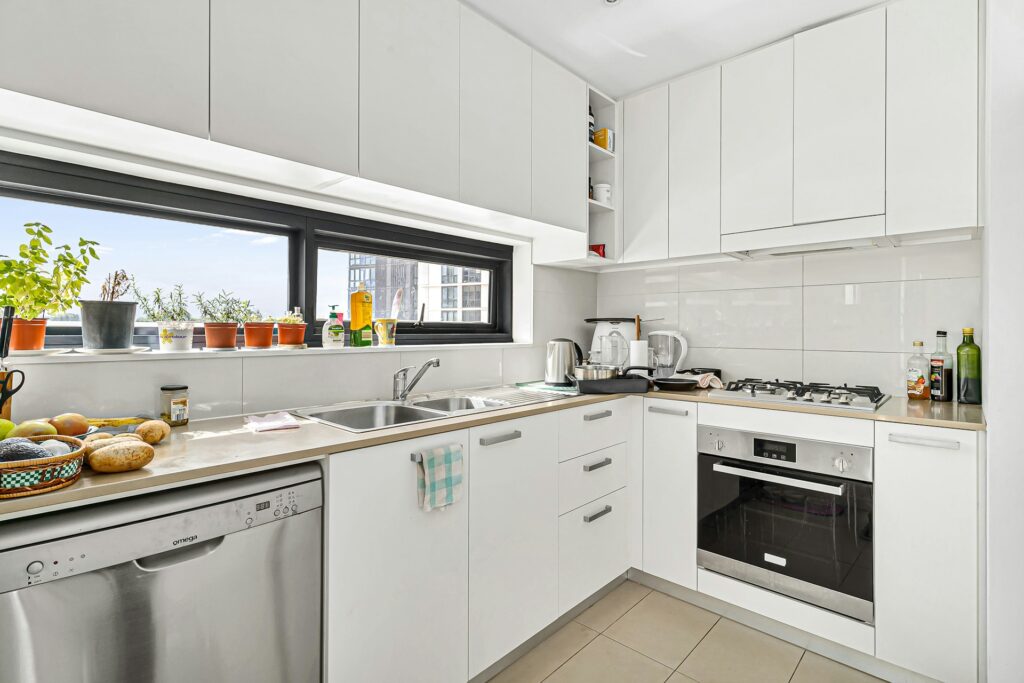
Making the right decision about your malfunctioning oven can save you hundreds of dollars and prevent unnecessary stress. Whether your oven refuses to heat up, burns everything you cook, or makes strange noises, you’re facing a common dilemma that homeowners encounter with kitchen appliances.
The choice between oven repair and replacement isn’t always straightforward. Multiple factors come into play, from the age and condition of your current appliance to your budget and long-term plans. Understanding these considerations will help you make an informed decision that aligns with your needs and financial situation.
This comprehensive guide examines the key factors that influence whether repairing or replacing your oven makes the most sense. We’ll explore cost savings opportunities, evaluate different scenarios, and provide practical insights to help you navigate this important household decision.
Age of Your Kitchen Appliances
The 50% Rule for Repair Decisions
Professional repair technicians often follow the 50% rule when advising customers. If the repair cost exceeds 50% of your oven’s current value, replacement typically makes more financial sense. This rule becomes particularly relevant when dealing with older kitchen appliances that have already served well beyond their expected lifespan.
Typical Oven Lifespan Expectations
Most conventional ovens last between 10 to 15 years with regular use and proper maintenance. Gas ovens tend to have slightly longer lifespans than electric models due to fewer electronic components. Consider these timeframes when evaluating your options:
- 0-5 years: Repairs are usually cost-effective, especially if covered under warranty
- 6-10 years: Evaluate repair costs against remaining useful life
- 11-15 years: Replacement often provides better long-term value
- 15+ years: Replacement is typically the most practical choice
Warning Signs of Aging Appliances
Older ovens often exhibit multiple issues simultaneously, indicating that major components are failing. Watch for uneven heating, frequent temperature fluctuations, worn door seals, and control panel malfunctions. These problems compound over time and suggest that your appliance is nearing the end of its useful life.
Cost Analysis and Budget Considerations
Breaking Down Repair Expenses
Oven repair costs vary significantly depending on the specific problem and required parts. Minor issues like replacing a heating element or fixing a faulty thermostat might cost $150-300. However, major repairs involving the control board, gas valve, or door mechanism can exceed $500-800.
Replacement Investment Planning
New ovens range from $400 for basic models to $3,000+ for premium kitchen appliances with advanced features. Mid-range options typically fall between $800-1,500 and offer reliable performance with modern conveniences. Factor in delivery, installation, and disposal fees when calculating total replacement costs.
Cost Savings Through Strategic Timing
Consider seasonal sales, manufacturer rebates, and energy efficiency incentives when planning a replacement. Many retailers offer significant discounts during holiday weekends and end-of-model-year clearances. Research available rebates for energy-efficient models, which can offset a portion of your initial investment.
Long-Term Financial Impact
Calculate the total cost of ownership over five years, including potential future repairs, energy consumption, and productivity losses from unreliable performance. Newer models often provide better energy efficiency, which translates to lower utility bills over time.
Energy Efficiency and Modern Features
Comparing Energy Consumption Patterns
Older ovens typically consume more energy due to outdated insulation and heating elements. Modern kitchen appliances feature improved efficiency ratings that can reduce your monthly energy bills by 10-20%. This ongoing cost savings helps offset the initial replacement investment over several years.
Smart Technology Integration
Contemporary ovens offer connectivity features, precise temperature control, and automated cooking programs that weren’t available in older models. These conveniences enhance cooking results and provide greater flexibility for busy households.
Safety Improvements in New Models
Modern ovens include enhanced safety features such as automatic shut-off timers, child locks, and improved ventilation systems. These upgrades reduce fire risks and provide peace of mind, especially in households with young children or elderly family members.
Frequency and Severity of Problems
Identifying Pattern-Based Issues
Document recurring problems with your current oven to identify patterns that suggest underlying mechanical failure. If you’re calling for repairs more than twice per year, replacement often provides better value than continued maintenance expenses.
Emergency Repair Situations
Some oven problems pose immediate safety risks and require prompt attention. Gas leaks, electrical sparking, or door latch failures demand professional evaluation regardless of your long-term replacement plans. Never ignore these warning signs, as they can compromise household safety.
Impact on Daily Cooking Routine
Consider how oven reliability affects your meal preparation and family schedule. Frequent breakdowns disrupt cooking plans and may force you to rely on expensive takeout options while waiting for repairs. Reliable kitchen appliances support consistent meal planning and budget management.
Availability of Replacement Parts
Older oven models may have limited parts availability, leading to longer repair times and higher costs. Manufacturers typically support models for 7-10 years after discontinuation, but sourcing components becomes increasingly difficult and expensive over time.
Professional Assessment vs DIY Evaluation
When to Consult Repair Specialists
Complex oven problems involving gas connections, electrical wiring, or sealed systems require professional diagnosis. Experienced technicians can quickly identify root causes and provide accurate repair estimates, helping you make informed decisions about your kitchen appliances.
Basic Troubleshooting Steps
Simple issues like blown fuses, loose connections, or calibration problems might be resolved without professional intervention. Check your owner’s manual for basic troubleshooting guides and safety precautions before attempting any repairs.
Understanding Diagnostic Fees
Most repair services charge diagnostic fees ranging from $75-150, which may be applied toward repair costs if you proceed with their recommendations. This investment provides valuable insight into your oven’s condition and helps validate your repair-versus-replacement decision.
Getting Multiple Repair Quotes
Obtain estimates from several qualified repair services to ensure competitive pricing and consistent problem diagnosis. Significant variations in quotes may indicate different approaches to the repair or varying levels of expertise among technicians.
Making the Final Decision
Weighing Immediate vs Long-Term Needs
Consider your household’s cooking habits, family size, and plans when making this decision. Growing families might benefit from upgrading to larger capacity ovens, while empty nesters could downsize to more efficient models that better match their current needs.
Environmental Considerations
Repairing functional appliances reduces waste and environmental impact, while replacement provides access to more energy-efficient technology. Balance these factors based on your environmental priorities and the overall condition of your current oven.
Timing Your Purchase Decision
Avoid rushed decisions that might lead to buyer’s remorse or overspending. If your oven is still functional but showing signs of decline, begin researching replacement options early to take advantage of sales and make thoughtful comparisons.
Planning for Installation and Disposal
Factor in the logistics of oven replacement, including delivery scheduling, installation requirements, and proper disposal of your old appliance. Some retailers offer comprehensive services that handle these details, while others require separate arrangements.
Smart Shopping for Kitchen Appliance Success
The repair-versus-replacement decision ultimately depends on your specific situation, budget constraints, and long-term household needs. Use this website as a reference when evaluating your options and consulting with repair professionals.
Start by honestly assessing your current oven’s age, repair history, and overall condition. Calculate potential cost savings from both repair and replacement scenarios over a five-year period. Consider the convenience and safety benefits of modern kitchen appliances alongside the immediate financial investment required.
Remember that the cheapest option isn’t always the most economical choice. Factor in reliability, energy efficiency, and your family’s cooking requirements when making this important household decision. Whether you choose professional oven repair or invest in a new appliance, prioritize solutions that align with your budget and lifestyle needs.
Last modified: August 25, 2025








